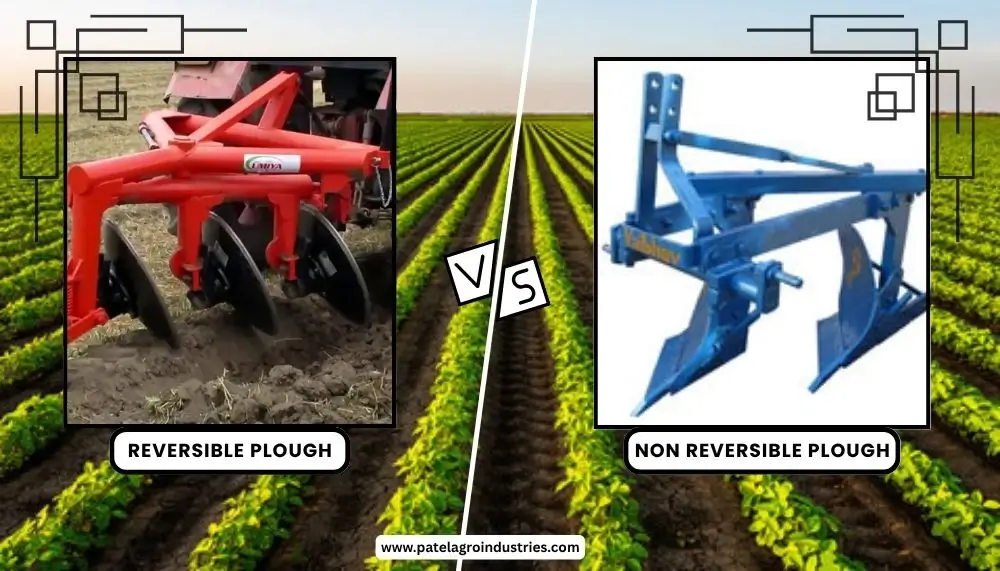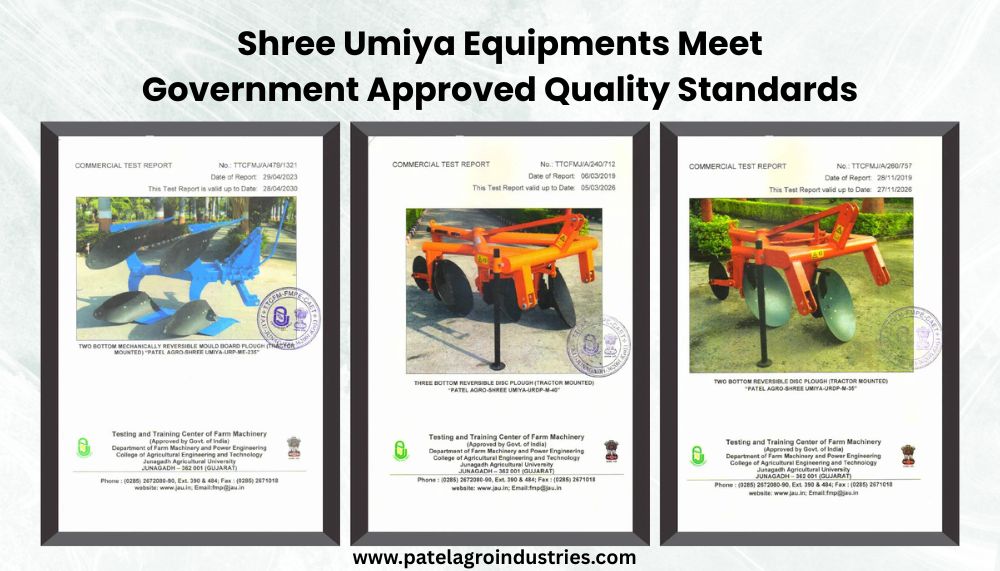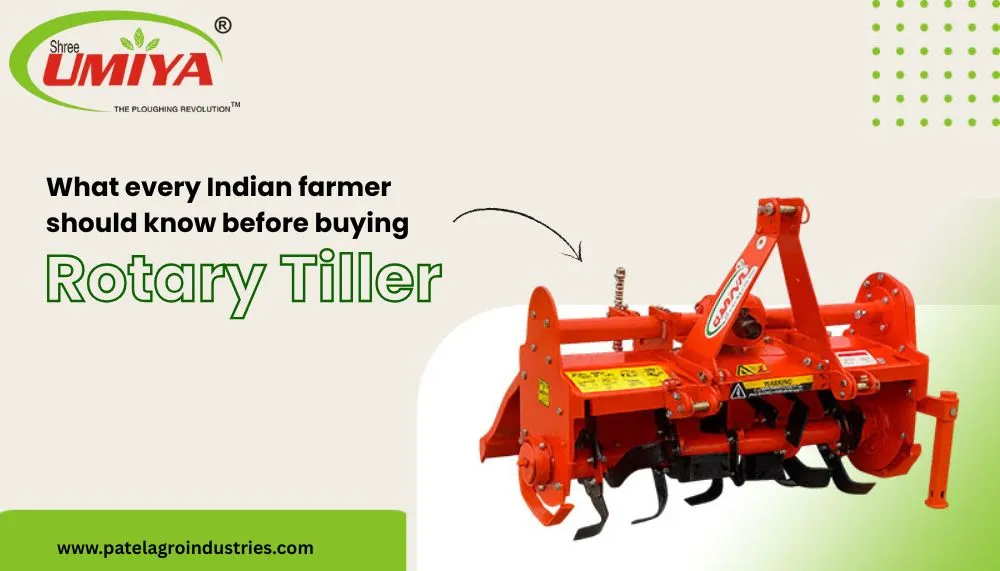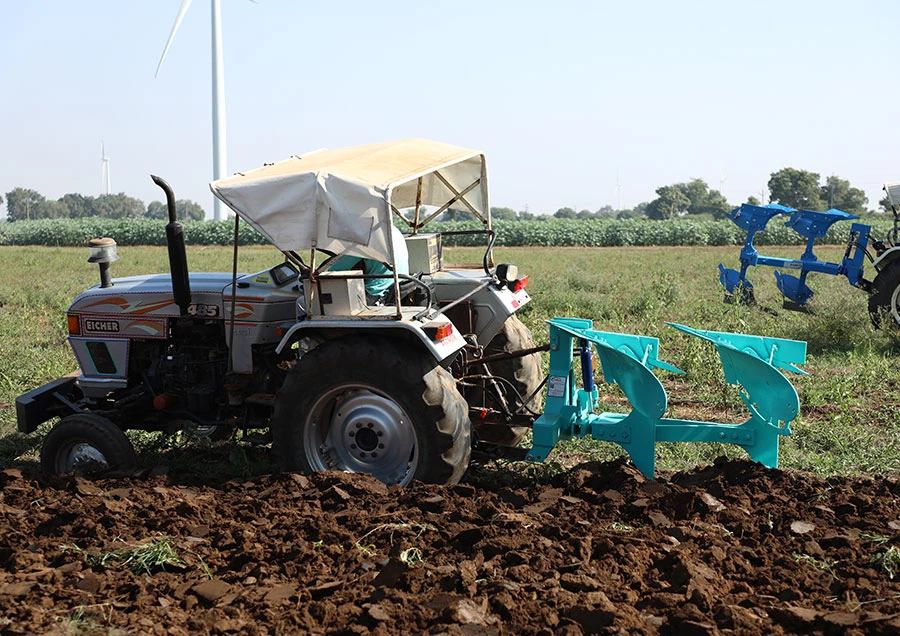Chat With Us
+91 99253 37969Reversible Plough vs Non-Reversible Plough: What Should You Choose?

For generations, the plough has been the trusted companion of Indian farmers. But now, with modern equipment, advanced options, and increasing cost-awareness, even a simple question like “Which plough should I buy?” isn’t so simple anymore.
That’s where the confusion begins—Reversible Plough or Non-Reversible Plough?
If you’ve found yourself stuck at this decision (or had heated arguments at the tea shop over it), this blog is for you.
Let’s simplify the decision, the Patel Agro way—practical, precise, and powered by real farming experience.
First, What Is a Plough?
Before diving into types, let’s clear the basics. A plough is an implement used to till the land, break up soil, turn over crop residue, and prepare the field for sowing.
In modern tractors, there are two popular types:
- Reversible Plough
- Non-Reversible (or Conventional) Plough
The Real Problem Farmers Face While Choosing A Plough
When choosing farm implements, most farmers focus only on price. But over time, a cheaper implement may consume more fuel, take more time, and reduce soil productivity.
We’ve seen cases where:
- Farmers with uneven land struggle with deep tillage using non-reversible ploughs.
- Fields with heavy residue don’t get fully covered unless the plough direction is changed.
- Drivers waste time circling the tractor after every run.
And that’s exactly why understanding the difference matters.
What Is a Reversible Plough?
A Reversible Plough has two sets of mouldboards (blades) arranged to turn soil in opposite directions. After every run, the plough automatically or manually flips, allowing the operator to till in the same direction without turning the tractor.
Patel Agro’s Reversible Ploughs are designed for Indian soil types, come in hydraulic and mechanical variants, and are compatible with most 35–60 HP tractors.
What Is a Non-Reversible Plough?
A Non-Reversible Plough has a single set of blades that turn soil in only one direction. After each furrow, the tractor needs to circle back or reverse direction to start the next run.
These are basic, cost-effective, and easy to maintain, and are widely used by small and marginal farmers.
Key Differences: Reversible vs Non-Reversible Plough
| Feature | Reversible Plough | Non-Reversible Plough |
| Tillage Direction | Both Left & Right (flips after each pass) | One direction only |
| Field Efficiency | Higher – less turning | Lower – more turning |
| Fuel Consumption | Optimised over time | Often higher due to extra manoeuvring |
| Time Required | Faster completion | Slower due to directional change |
| Ideal For | Medium to large farms | Small, simple plots |
| Operator Comfort | High – less strain | Moderate – more turns, more fatigue |
| Residue Coverage | Excellent – double-sided cut | Moderate – single side only |
| Initial Cost | Higher investment | Lower cost |
| Maintenance | Slightly higher | Lower |
| Soil Depth & Consistency | Uniform, deep tillage | Varies, especially on slopes |
When Should You Choose a Reversible Plough?
Here’s where a Reversible Plough from Patel Agro shines:
Choose if:
- You own a medium to large farmland.
- Time, labour cost, and diesel savings are important.
- Your soil needs uniform turning and deeper tillage.
- You deal with heavy crop residues after harvest.
- You want to avoid tractor turns at every edge.
- Your farm has hilly or uneven terrain.
Patel Agro’s Hydraulic Reversible MB Plough is engineered for strength, balance, and long-lasting performance. The hydraulic model lets you reverse the plough with just a lever, reducing manual effort.
When Is a Non-Reversible Plough Better?
Not every field or farmer needs a high-tech solution.
Choose if:
- You have a small landholding or rectangular plot.
- You’re working with a limited budget.
- You prefer manual simplicity over automation.
- You already have experience managing direction manually.
- Your crop doesn’t require deep tillage.
Patel Agro’s Heavy-Duty MB Ploughs in the non-reversible category are built to last and are available in 1, 2, and 3-bottom options for different tractor HP ranges.
Cost vs Value: Think Long-Term
Yes, reversible ploughs cost more upfront. But consider the lifetime value:
- Fuel saving in every acre tilled.
- Time saved = more fields covered.
- Better soil health with consistent tillage.
- Reduced operator fatigue.
If you do the math, a reversible plough pays for itself in 2–3 seasons, especially on larger farms.
Why Choose Patel Agro Ploughs?
At Patel Agro, we don’t just build farm machinery. We build for the Indian farmer’s reality—diverse soils, budget constraints, and real-world productivity.
Patel Agro Ploughs Offer:
- ISI Certified Materials
- Custom Designs for Indian Tractors
- Field-Tested for Tough Conditions
- After-Sales Support & Spare Parts Availability
- Both Hydraulic and Mechanical Reversible Options
Whether you’re just starting out or scaling up your operations, we’ve got the plough that fits your land, your crop, and your budget.
The Final Verdict: Which One Wins?
Honestly, both ploughs are great when used right. It’s not a matter of which is better. It’s about which is better for you.
Use this cheat sheet:
| Situation | Go For |
| Small fields, tight budget | Non-Reversible Plough |
| Medium-large farm, long hours | Reversible Plough (Hydraulic) |
| Need speed and efficiency | Reversible |
| Simple maintenance needed | Non-Reversible |
| Heavy soil or crop residue | Reversible |
| Steep land or slopes | Reversible |
Ready to Choose Your Plough?
At Patel Agro, we’re here to guide, not just sell. Whether you need a rugged reversible plough or a dependable non-reversible model, we’ll help you make the right investment. Explore our latest plough range on our website.





